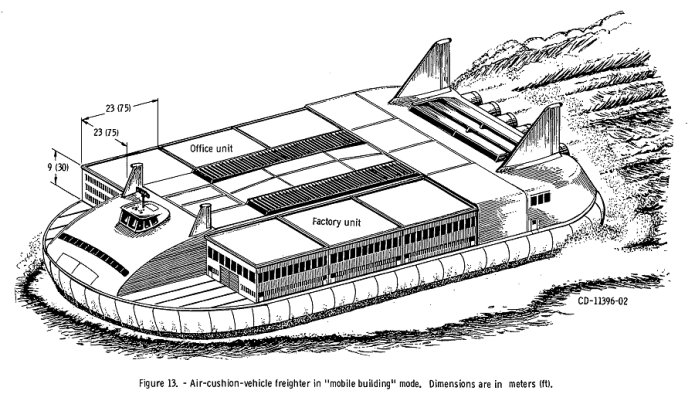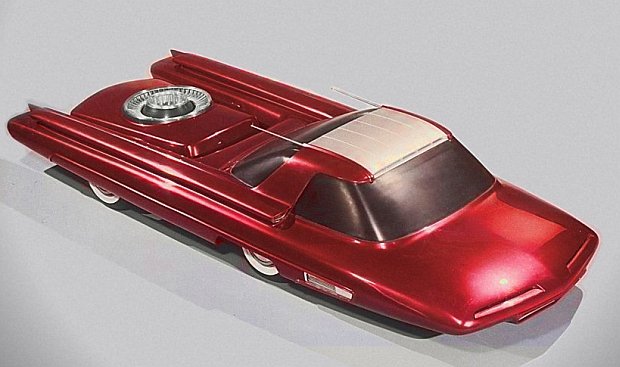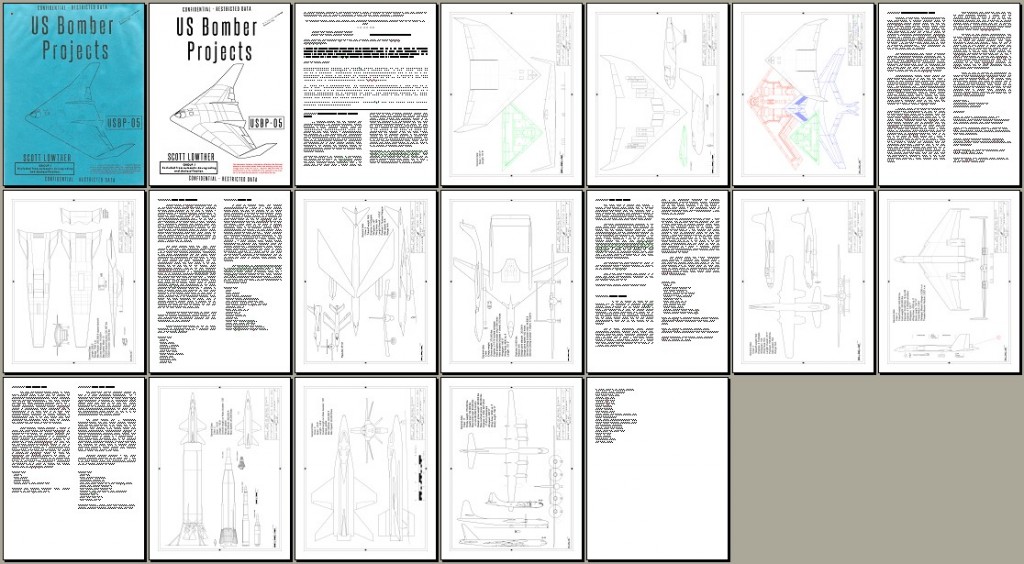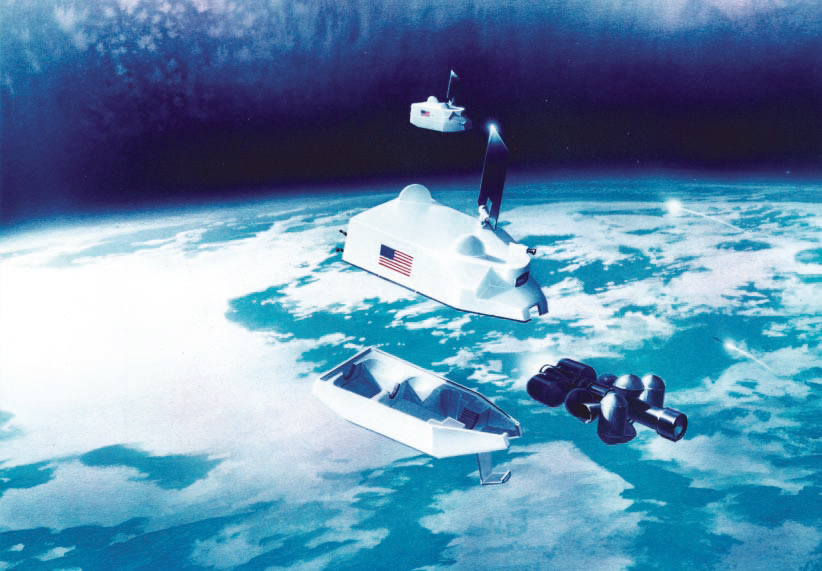Nuclear Power

In my vision of how to get from the real world of 1968 to the alternate reality of 2001: A Space Odyssey, I made nuclear power an important aspect. Rather than basically locking up in the 1970s, nuclear power expands to become not only the dominant electrical power generation system, but has grown into whole new markets. Space, of course, has made considerable use of nuclear power and nuclear propulsion.
Nuclear power is mentioned in “2001,” and of course the Discovery is nuclear powered, so obviously nuclear power is alive and well in “2001:ASO.” However, by my recollection, neither the movie nor the book go into much detail about it. There is, however, one little detail that tells me the whole story:
[youtube kS9dhG_dYVQ]
If you don’t know the details beyond having seen this scene, you won’t get it. It’s a cool scene, but what does it have to do with nukes? The little detail that’s not obvious: the pen… it’s nuclear powered. At the time, Parker Pen Company put out this press release:
“Designers from… Parker Pen, among many others, were asked by Kubrick to produce samples of what their companies might have on the market in 33 years’ time.
“An example of a product (of) the future is this atomic pen made by the Parker Pen Company and used in the movie. It is equipped with a tiny isotopic packet within the pen to produce power which is then converted to heat. This varies the flow of the pen’s ink supply so that the writer can produce a wide range of line densities, from barely visible to strikingly embossed – a feature required by the addition of a third dimension to handwriting that Parker pundits think might develop during the next three decades.
“No point in going to your dealer’s now – Parker doesn’t expect to put this pen on sale until the next century!”
So, in alternate-timeline 1999, consumer electronics might be rather backwards… but consumer atomics are a real thing. Even if we assume that an atomic pen is a rare, expensive commodity, available only to the rich and highly ranked government bureaucrats, they are nevertheless available. This means economically available, technologically available and, importantly, legally and politically available. If someone were to produce a radioisotope-powered pen, there’s virtually no chance that it would be allowed to be sold in todays America. So… in the alternate timeline, nuclear power is sufficiently developed to permit the development of atomic pens, and sufficiently accepted to allow folks to walk around with easily-lost nuclear power sources in their pockets.
In the real world, three corporations did manufacture plutonium-powered pacemakers; only a few hundred of them, and they are returned to Los Alamos upon the death of the “owner.” These pacemakers were made in the 1970’s, and you of course cannot get them now.
So, in the alternate timeline, it seems to me that the only way to get atomic pens is to have a massive, and massively successful, civilian nuclear power program.
About the pen: the description sounds not unlike the nuclear D-cells mentioned hereabouts previously. The most likely explanation for the pen is that it contains a tiny nugget of plutonium-238, probably in oxide form, bound up in a heavy metal (tungsten, molybdenum, etc) matrix. It would sit and cook, consistently producing a certain thermal output. The ink would be a solid until the nuclear heat melts it. This would have to occur right at the tip, but the photos show the pen to have a more or less standard pointy pen-like tip. The ink and the heat source would seem to be up in the body of the pen, meaning that the hot liquid ink would have to flow some distance to the tip while staying liquid. In order to pull off this feat, it would seem that the duct would need to have a very high thermal conductivity. Silver is about as good as it gets with conventional material… but there’s a better option: diamond. About ten times the thermal conductivity of silver. So it could be speculated that the pen has a core of silver or perhaps vapor-deposited diamond. Expensive… but what the hell, it’s an atomic pen.

On other matters: in the real world, the US, the USSR, Germany and Japan each produced one nuclear powered cargo ship. The NS Savannah first sailed in 1959, and was mothballed in 1972. Very likely, it would have remained the only US nuclear cargo ship… for a while. In the alternate timeline, civilian nuclear ships might start reappearing in the mid 1980s. Nuclear cargo vessels, of course… and nuclear cruise ships. Perhaps nuclear powered luxury tourist submarines. That would seem rather Clarke-ian.
Additionally, the ready availability of marine nuclear propulsion opens up new possibilities. From the 1960’s into the 1980’s, there were numerous studies of oceangoing intercontinental nuclear powered cargo *hovercraft.* The advantage of this form of cargo transport over a regular ship, apart from increased speed, somewhat escapes me. The greatly increased fuel consumption of a hovercraft over a regular vessel of course helped doom the idea in real life, but in a world where energy is nearly free? Maybe…

By the late 80’s/early 90’s, all the commercial nuclear reactors in service the West would likely be new, By having a culture that embraces nuclear power, old reactors would be swapped out for new ones faster. Less safe designs would be replaced with more safe. Would the Chernobyl disaster happen there as it did here? Almost certainly not. By 1986, the changes in the the timeline would have reached deep across the world, so it’s very likely that the people responsible for the string of bad decisions led to Chernobyl would, at the very least, be making different decisions. But the Chernobyl reactor design was bad. It might be inevitable that something tragic would happen there, sooner or later.
How about atomic cars?

I’m still rather dubious on this, but just maybe. The real-life Nissan Leaf has an 80 kilowatt electric motor, so any nuclear powered car would need to be at least as powerful, and probably several times more powerful… the world of “2001” doesn’t seem to be one where people accept “basic transportation.” So if there are actually atomic cars, they would probably be sizable, powerful, fast and stylish, not nuclear powered econoboxes. So, let’s call it 215 kilowatts, same as the Tesla Roadster. If we assume RTG power, like the atomic pen, then the car will have a pretty massive battery pack. Based on the “nuclear D-Cell,” five watts would be available in a package weighing less than a pound. But for 215,000 watts, that’s potentially 43,000 pounds… clearly not feasible. Obviously, by going to an integrated system, rather than a collection of D-cells, weight could be substantially reduced. And by being much better at atomics than we currently are, weight can be reduced. Even so, at 0.39 watts per gram this system would require at least 551 kilos (1212 pounds) of plutonium 238. Clearly not feasible.
So, an atomic car would seem to need an actual full-up nuclear reactor, not just an RTG. I’m beyond dubious that even in 2001-world, actual reactors would be allowed to roam the streets, driven by an army of technologically enhanced Don Drapers.
However, even today in our atomically stunted world, there are those looking to develop atomic cars. Laser Power Systems of Connecticut seems to be working on some sort of miniature nuclear reactor sized for automobile power production. Whether they’re for real, whether they’re on the right track, whether they have a shot in hell… I dunno. Their website seems unenlightening. But if a thorium reactor could be designed *today* that just might work for a car… then in the alternate timeline, it’d be a near-certainty that it would be at least possible.
In a world where a large fraction of the entire plants energy production comes from nukes, where would the nuclear fuel come from? Where, in short, would all the uranium be dug up? Well… it need not be dug up at all. Rather, even today we can fish uranium out of sea water. Couple that with the addition of thorium fueled reactors, and mankind could have an embarrassment of electrical riches for many centuries. And that’s not even considering nuclear fusion powerplants.
Next: Ummm… I dunno. Fashion? Style?? Meh, I’m probably done here.







